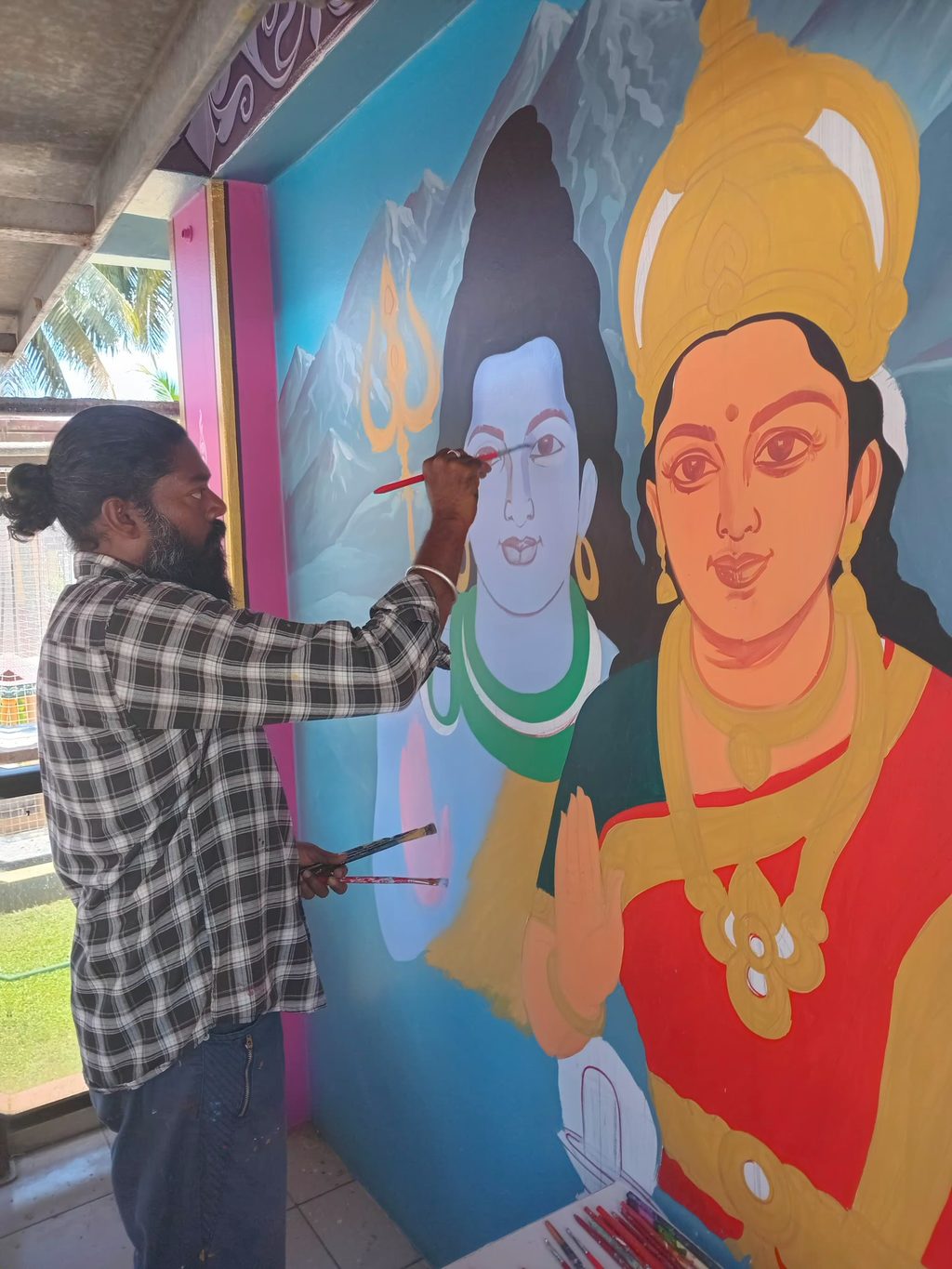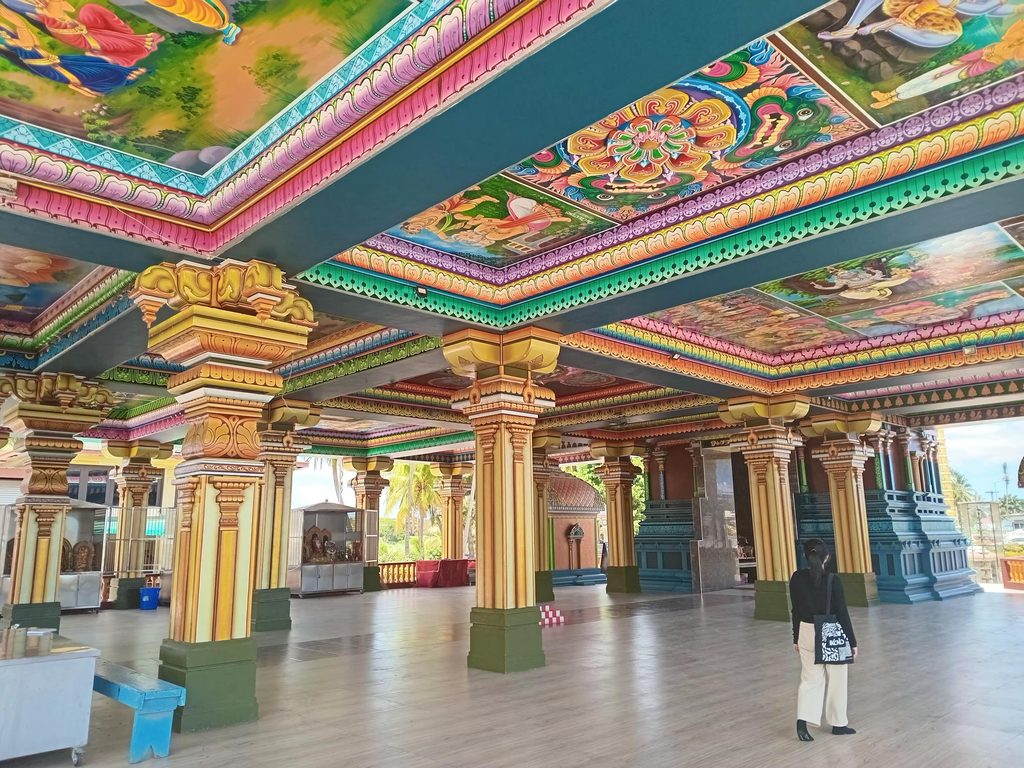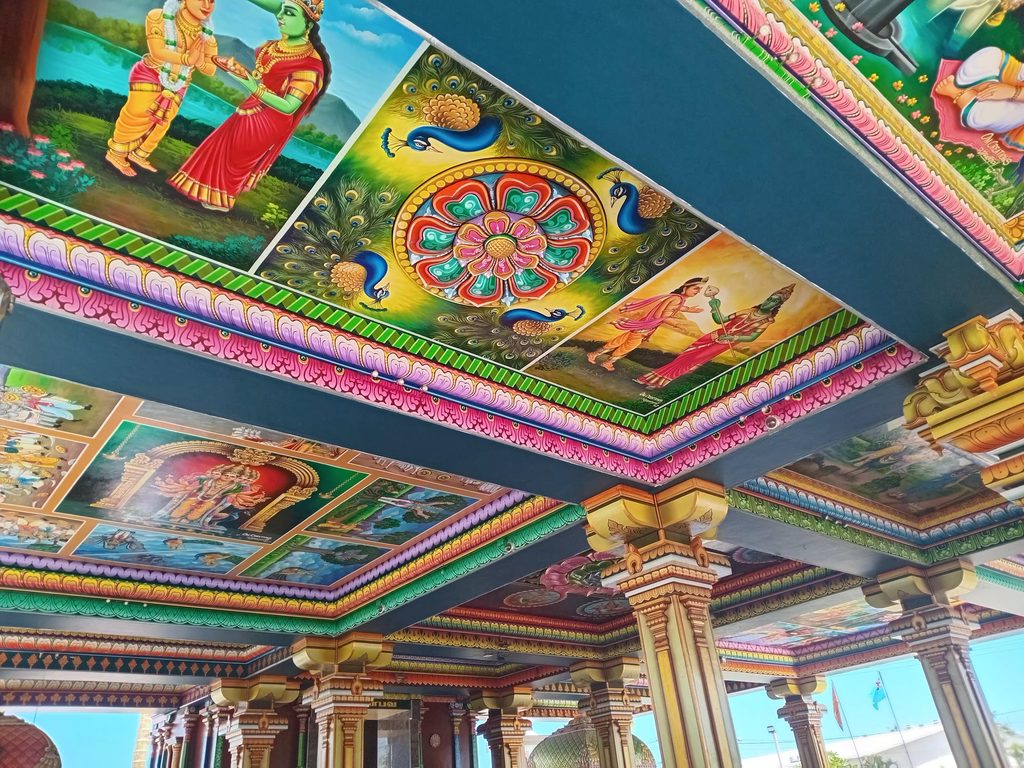AS the countdown to Sangam Fiji’s centennial celebration gathers momentum, the organisation is undertaking a powerful gesture of renewal.
It is one that reaches deep into its spiritual and cultural foundations.
What is central to this milestone is the restoration of two of its most iconic temples — the Sri Siva Subramaniya Swami Temple in Nadi and the Sri Maha Mariamman Temple on Howell Rd in Suva.
These sacred places have long served as pillars of devotion, community gathering, and ancestral memory.
Their restoration is a recommitment to the values that have guided Sangam Fiji for nearly a century.
Painting and intricate artwork at the Sri Siva Subramaniya Swami Temple is nearing completion, while restoration works at the Suva temple are scheduled to begin soon.
To ensure the highest standards of craftsmanship and authenticity, Sangam Fiji engaged six master artisans from India, who are renowned for their expertise in traditional temple art.
These craftsmen hail from Mahabalipuram, a region famous for its temple architecture and sculpture.
Their work is devotional and precise, rooted in centuries-old techniques.
While four of the artisans have returned to India after completing major works in Nadi, two remain in Fiji to finish the remaining details and prepare for the next phase in Suva.
Yuvraj Thandavan and Karthikeyan Neelakandan, both first-time visitors to Fiji, are now entrusted with completing the final touches at the Sri Siva Subramaniya Swami Temple.
Mr Thandavan has been painting temples for 23 years, while Mr Neelakandan has nine years of experience.
Both trained at the Architect and Sculpture College in Mahabalipuram.
“There were six of us who came from India, and while four have left after the completion of major painting, only two of us remain to complete the remaining painting works,” said Mr Thandavan.
“We are just left with completing the two small temples behind the main temple and some other works if needed. Once we finish in Nadi, we will move to Suva to paint the temple there.”
The two artisans were recently seen immersed in their work at the Nadi temple.
Sangam Fiji CEO Jai Narayan said giving a new look to the two temples was a priority in the lead-up to the centennial.
“It’s part of our commitment to preserving Sangam’s spiritual and physical infrastructure,” he said.
The Sri Siva Subramaniya Swami Temple, a major attraction for both locals and tourists, continues to draw visitors daily.
It is one of the main places of worship for Hindu devotees in Fiji and even for those coming from abroad.
However, in keeping with temple protocols, photography is not permitted inside the main temple building, and notices to this effect have been posted.
People visiting the temple, be they tourists or devotees, can take pictures from outside.
In a further gesture of cultural investment, the Tamil Nadu and Indian governments have seconded three Tamil language teachers to Sangam Fiji.
These educators are on three-year terms from the beginning of this year and are currently teaching in Sangam-run schools across the country.
T Vijayalakshmi is based at Penang Sangam Primary School in Rakiraki, while Lavnaya Angoor teaches at Nadi Sangam Primary School.
Sadasivam Thangavel, stationed at Labasa Sangam Primary School, also conducts classes at Coqeloa Sangam and Tabucola Sangam Primary Schools.
Mr Narayan said Mr Thangavel also holds online Tamil language lessons for Sangam members interested in learning the language.
Restoring temples and expanding language education underscore the depth and vision of Sangam Fiji’s centennial campaign.
It is not simply a celebration of the past, but a strategic investment in the future.
Founded in 1926 by Sevaka Ratnam Sadhu Kuppuswamy, Sangam Fiji emerged from the aspirations of South Indian indentured labourers, or Girmitiya.
They had gathered in Rakiraki to form a movement rooted in unity, education, and cultural preservation.
Today, nearly a century later, that movement continues to evolve, honouring its origins while embracing new generations.
The centennial anniversary will be celebrated at King Charles Park in Nadi during the Easter weekend in April 2026.
As preparations unfold, the restoration of the two main temples stands as a visible and sacred symbol of Sangam’s enduring legacy.
It is a legacy built on love, light and faith.
n AVINESH GOPAL is the communications and publicity officer for Then India Sanmarga Ikya Sangam Fiji
Yuvaraj Thandavan puts finishing touches to a painting of Lord Shiva and goddess Parvati at the Nadi temple. Picture: SUPPLIED

Karthikeyan Neelakandan paints the ceiling area of a temple within the Nadi temple complex. Picture: SUPPLIED

The inside of the temple in Nadi. Picture: SUPPLIED



